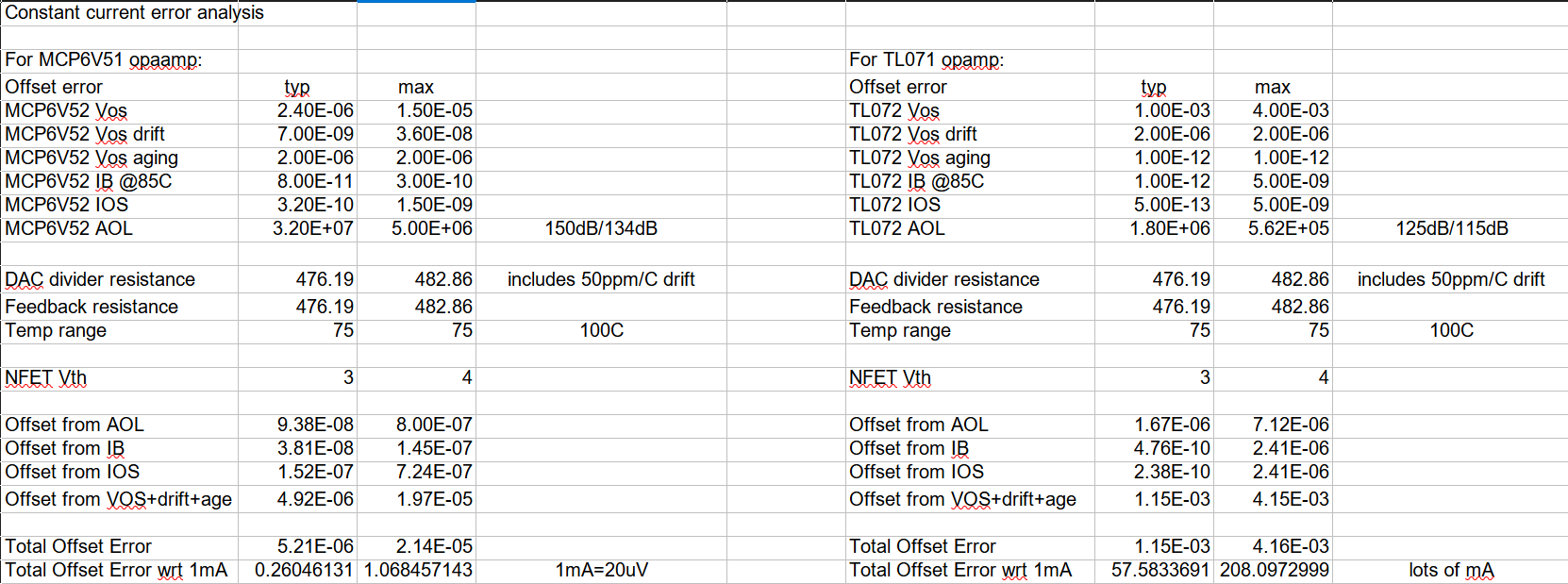We have the topology selected that minimizes gain errors to a first order -- primarily resistor tolerances. What opamp will give us the best bang for the buck when it comes to all of the errors associated with the amplifiers? I put together a spreadsheet to add up the various errors caused by the opamp.
For perspective, it is worthwhile to note that 1mA of current requires only 20uV of voltage across the 20mR sense resistor.

I have used a MCP6V51 opamp on another project and was impressed. It is a chopper-stabilized (i.e. zero-drift) opamp with incredible specifications. On the right side of the spreadsheet is the TL071 -- a general purpose JFET-input opamp. The first section lists each opamps specs wrt input offset voltage and input bias/offset current, as well as the open-loop gain (AOL) for both typical and worst-case values. Below that I calculated the effective resistances at the inputs to the opamp and the expected maximum temperature range (25-100C).
AOL Error
In this application the amplifier has to drive the NFET gate to around 3-4V before any current flows in the NFET. If the open-loop gain is low then the amplifier will require more voltage difference between the + and - inputs, which incurs an error. The MCP6V51 has a typical open-loop gain of 150dB (32 million V/V) vs. the typical TL071 AOL of 125dB ( which isn't shabby at 1.8 million V/V). To output 3V the MCP will need a voltage difference of 94nV vs. 1.7uV for the TL. Under worst-case conditions, the MCP needs a difference of 0.8uV vs. 7.1uV for the TL. So the the lower AOL causes about 0.3mA of error from the TL vs. only 0.04mA of error from the MCP.
Input Current Errors
Input bias current and input offset current errors are typically better for the TL but worse for the worst-case specifications. They are small for both opamps.
VOS Error
The input offset error is the biggie, and it's made worse with temperature drift. Worst-case VOS for the MCP is nearly 20uV, which is 1mA of error. Worst case VOS for the TL is more than 4mV -- an error of more than 200mA. Even the typical TL VOS error is nearly 60mA.
Temperature Drift
The initial offset of the system can be removed by measuring and storing the offset current. But as the box heats up from a high wattage load the offset and gain terms will drift, causing errors. If you compare the VOS drift terms between the two opamps there is a clear winner. The MCP has 50X lower drift over temperature.
 Bud Bennett
Bud Bennett
Discussions
Become a Hackaday.io Member
Create an account to leave a comment. Already have an account? Log In.